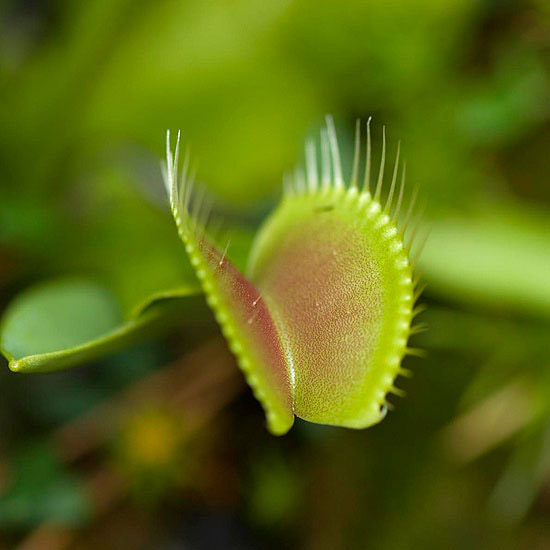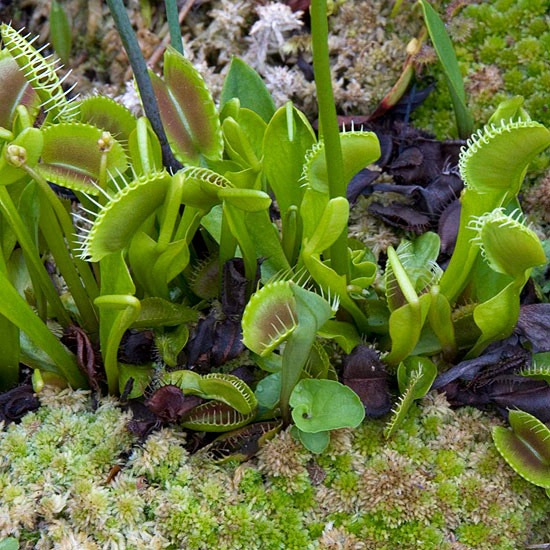






When I was a kid, I thought Venus flytraps really did come from Venus. Their gaping bifold jaws with spiky fringed "teeth" seemed alien enough, but when an insect landed on that enticing pink center and the trap closed with lightning speed, well, that was exciting! Growing Venus flytraps indoors seemed like a superhuman feat. Luckily, it's not difficult if you know how to grow a Venus flytrap.
Instead of originating one planet away from Earth, Venus flytraps (Dionaea muscipula) are perennials native to boggy areas of coastal North and South Carolina. They grow in moist, acidic soils in full sun, but only survive winter outdoors in Zones 8-10. Gardeners in colder-winter climates should grow Venus flytraps in a moist environment, such as a terrarium, that can go indoors during winter.
Venus flytrap thrives in poor, acidic soil with good drainage. Avoid planting it in regular potting soil: A blend of one-third sand and two-thirds sphagnum peat moss provides the best drainage and moisture retention. Do not add lime to the soil and never fertilize the plant.
Venus flytraps do best in bright light but can live in partial shade. Avoid placing them in direct sunlight in summer, especially if they live under glass, as plants hit with direct sunlight may get too hot and burn up. When grown inside under artificial lights, keep flytraps 4 to 7 inches away from fluorescent lights.
If your Venus flytraps don't show a pink interior or if the plants have long, spindly leaves, they are not getting enough sunlight.
Keep the environment humid and the soil moist but don't let the plants stand constantly in water. Grow them in a pot with drainage holes. If you have a Venus flytrap terrarium, place gravel below the soil for extra drainage. Good air circulation is also important.
Use rain or distilled water to take care of your Venus fly trap, because tap water is often too alkaline or may contain too many added minerals.

What do Venus flytraps eat? The name says it all: The Venus flytrap eats flies (or other small insects). The prey must be alive when caught. Dead flies won't work; the insect must move around inside the trap or the trap cannot consume and digest it. The insect must be small enough to fit comfortably inside the trap so it can close tightly to keep out bacteria.
If you grow Venus flytraps in a closed terrarium, the easiest feeding method is to release small flies inside the space. Eventually the bugs will be attracted to the trap and be consumed.
Although flytraps are carnivorous, they can go long periods -- a month or two -- without eating insects. If you grow them outdoors, they will get enough to eat naturally. If they're indoors, you'll have to feed them dinner periodically.
Venus flytraps, like many other plants, need a period of winter dormancy when they appear to be dead (the leaves may die back) but are merely resting. Keep the plant 35 to 50 degrees F. Don't let terrariums freeze; the plants may die and the glass may break. At about the spring equinox, when days start growing longer, begin to increase warmth and light.
Plant breeders have been working with Venus flytraps and have come out with a few varieties, such as 'Akai Ryu', which has large burgundy-red traps. These special varieties are available from specialty garden centers or online retailers.
Copyright © www.100flowers.win Botanic Garden All Rights Reserved